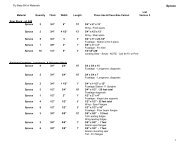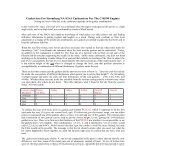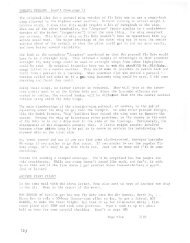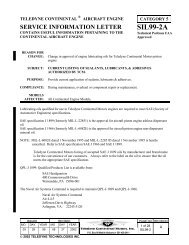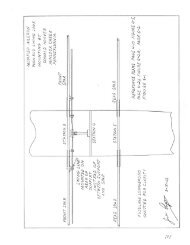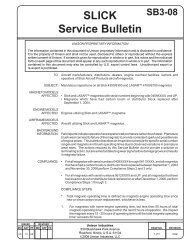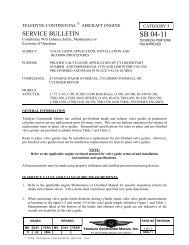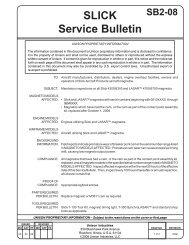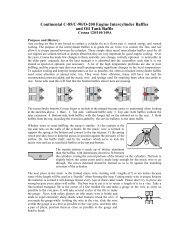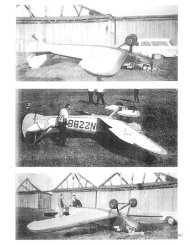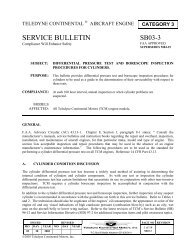Create successful ePaper yourself
Turn your PDF publications into a flip-book with our unique Google optimized e-Paper software.
(3) <strong>The</strong> third major thief of your working time is yourself. As the plane begins to go together it<br />
is entirely too easy to gaze dreamily at it by the hour, admiring your own handiwork and<br />
engaging in all sorts of flights of fancy while sitting in the cockpit of an unfinished fuselage<br />
perched on a pair of sawhorses0 Even if you don' t feel particularly ambitious when you go<br />
out to the shop; or time is short, try to make sane tangible progress. Don't goof off for one<br />
whole work period by kidding yourself with the thought that you'll really bear down on it<br />
"tomorrow" or even "next week'.<br />
Overdoing the improvements can be a personal matter, too, although in some cases it<br />
stems from improving skill as the job progresses <strong>The</strong>re may be such a difference between<br />
the first few ribs you built and the last that you want to scrap the early ones and do them<br />
over. Your own standards and time/cost considerations will be your only guides here.<br />
RECORDS AND PAPERWORK<br />
Keep a record of all purchases of material for your FLY BABY, whether new or used. This will<br />
keep you informed of actual costs, will enable you to answer the inevitable question that you will<br />
hear hundreds of times: "How much did it cost ya, mister?", and will enable you to help friends<br />
who are considering a homebuilt and yourself when planning another. Most important of all,<br />
however, it will enable you to establish a true cash value for your machine when the tax assessor<br />
comes around. If he is not experienced in evaluating; aircraft (some states tax airplanes as<br />
personal property while others use an excise tax) he may arbitrarily assign an unfairly high value<br />
An the absence of substantiating figures Also, sales slips can show that state sales taxes have<br />
been paid on the raw materials, another concern of the tax people when the plane is finished.<br />
Try, too, to keep at least a rough check on your working time. <strong>The</strong> next-most-asked question from<br />
the spectators is: "How long did it take you to build it?" <strong>The</strong>re is satisfaction in being able to snap<br />
off a concise and authoritative answer, either in terms of man-hours or days, weeks, and months.<br />
It is a very good idea to start the airplane logbook at the time you start construction Information<br />
as to the source and grade of raw materials can form a valuable historical record, and a record can<br />
be kept of essential pre-finish FAA inspections. Since a homebuilt is not pinned down to an<br />
approved bill of materials that is a matter of record as in the case of type-certificated production<br />
models, a record should be included of the type of covering material, type of dope whether nitrate<br />
or butyrate, and even the type of hydraulic fluid used in the brakes. You may forget over<br />
subsequent years, or a new owner not know at all if it isn't recorded, with a resulting complication<br />
of maintenance problems.<br />
Other paperwork directly concerned with registration and certification of your airplane is covered<br />
in Chapter 8, ASSEMBLY, TEST, AND FLYING.<br />
vii



